 | Zion Lutheran |
| Church | School | Early Childhood |
About Zion
What We Believe
Zion is a congregation that believes the Holy Bible is the inspired, inerrant Word of God which forms and informs what we believe and how we worship.
The Bible tells us of the story condition of sinful humanity and the depths of the love of our Heavenly Father. This love finds the fullness in the person and work of Jesus Christ, who being the Son of God, became human in His birth of the Virgin Mary and offered up His life to win the salvation of all humanity.
This AMAZING GRACE is what makes us His children and leads us to reach out to those around us. This undeserved love is proclaimed from our pulpit in every worship service and taught in our School and Bible Classes.
View Images Of Zion's History Below
1 / 11
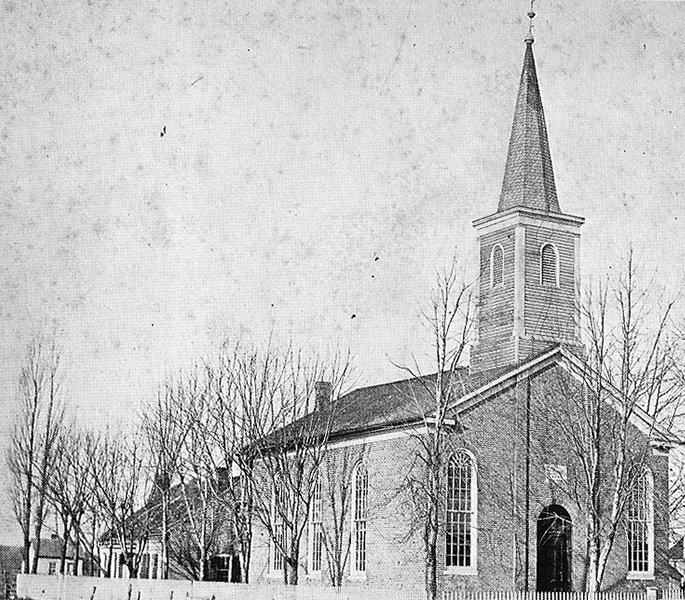
Zion's Church, 1863
2 / 11

Design Print for the New Church in 1904
3 / 11
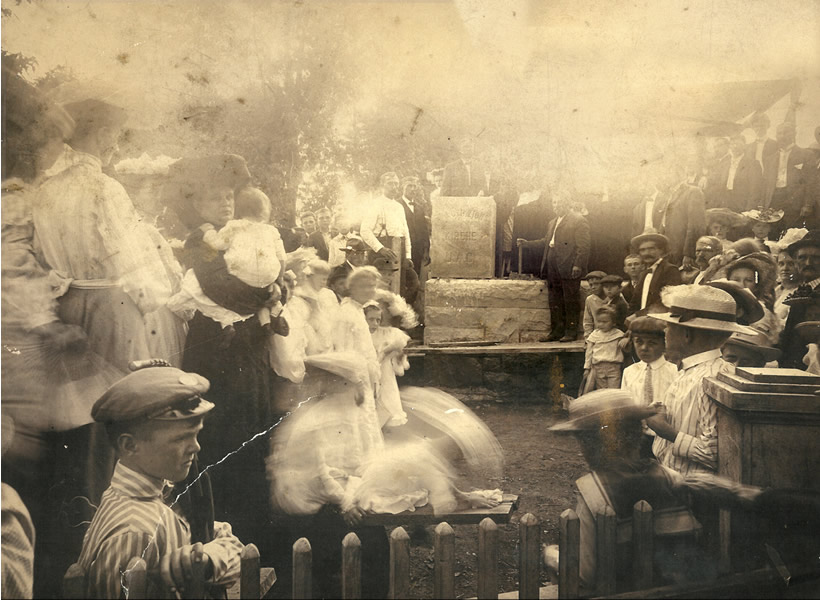
Laying of the Cornerstone, August 1904
4 / 11
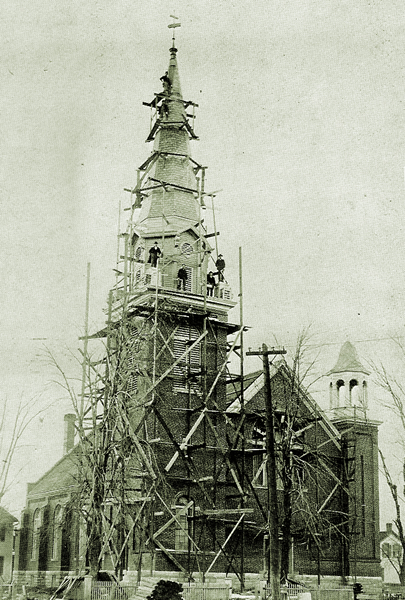
Builders taking time out in 1905 for a picture
5 / 11
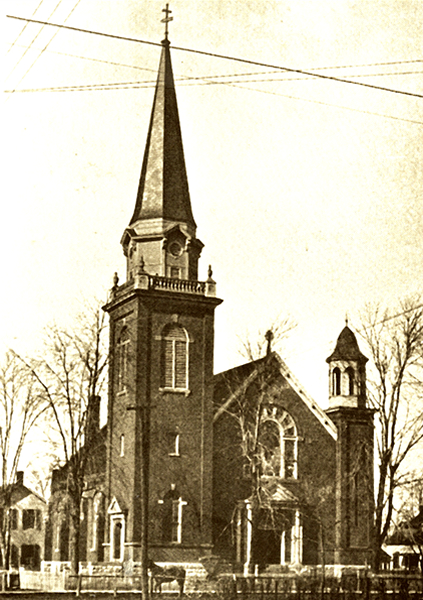
New Church of 1905 Completed
6 / 11
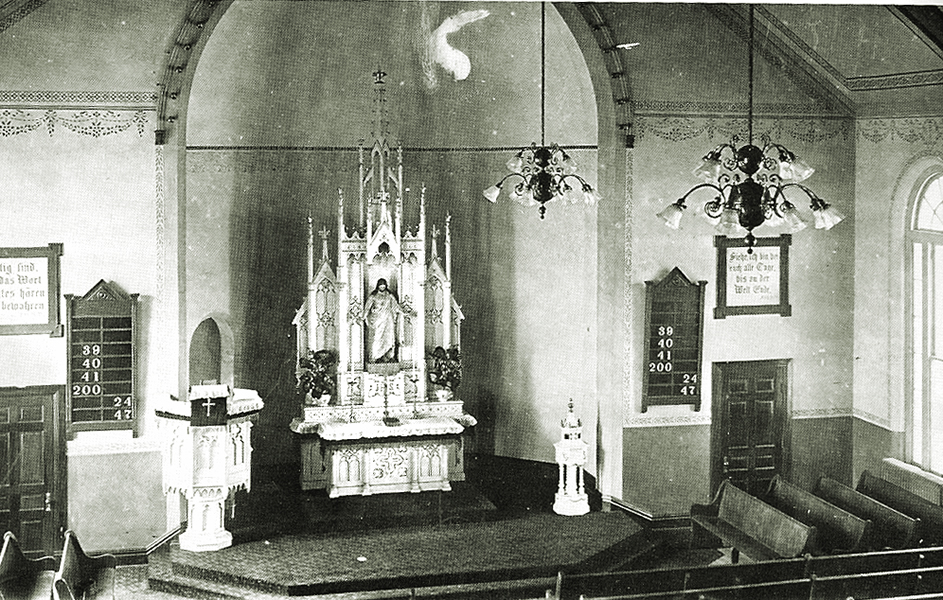
Inside the Church, 1905
7 / 11
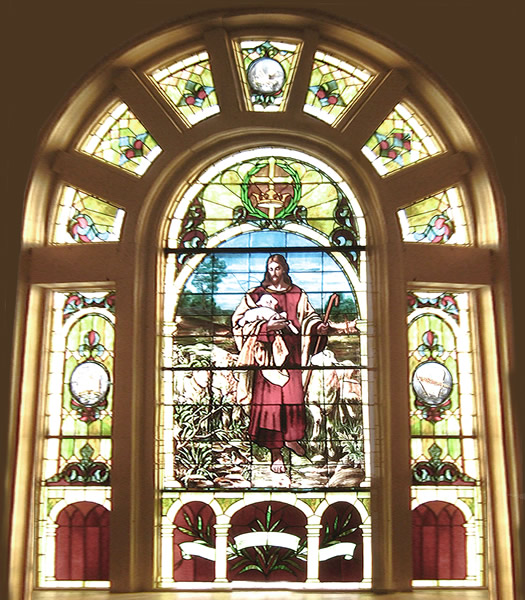
The Stained Glass Window of the Good Shepherd
8 / 11
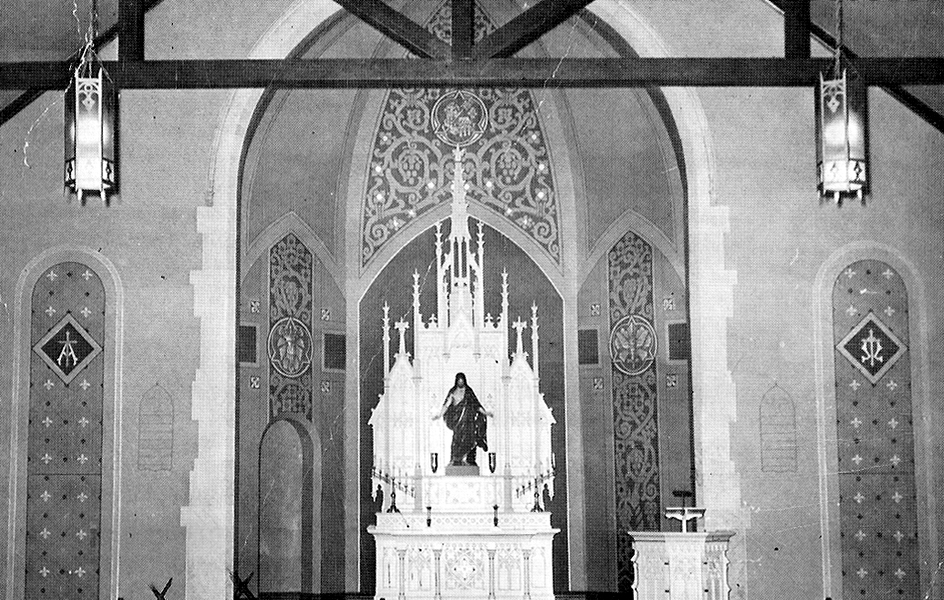
Zion Remodeled in 1953
9 / 11
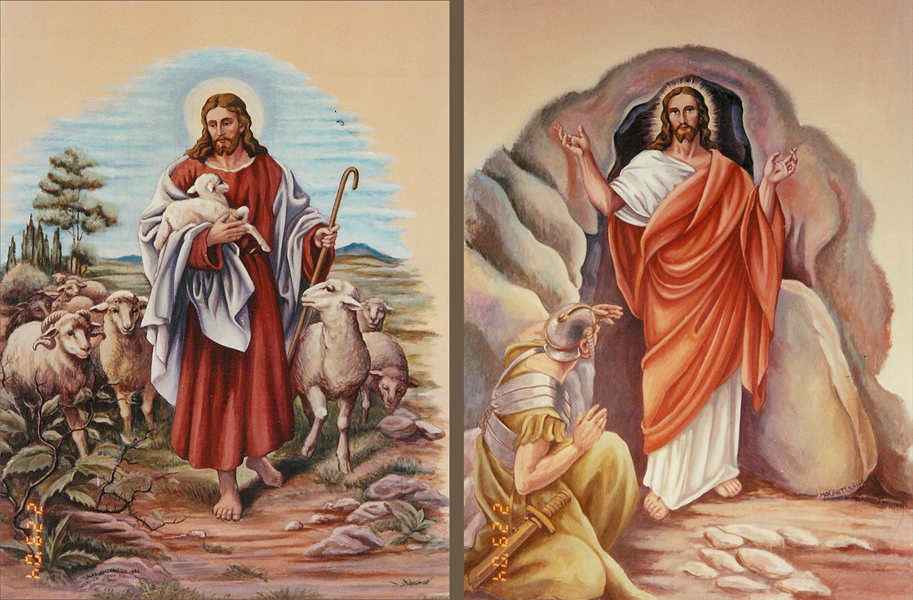
Murals Painted by Max Autenrieb, added in 1962
10 / 11
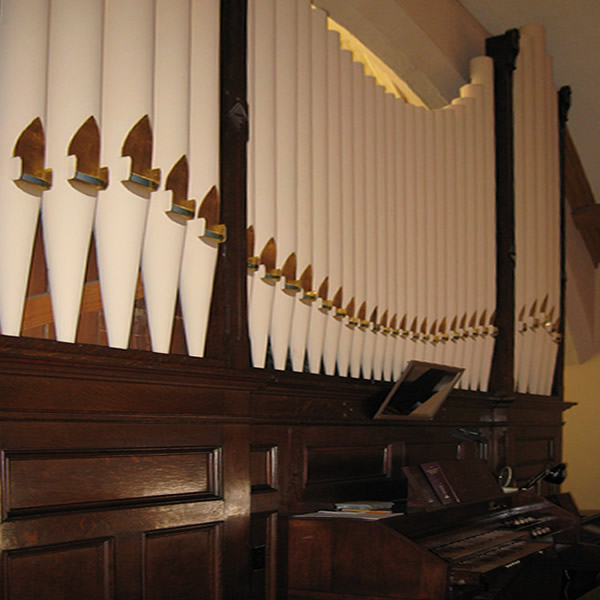
Zion's Current Organ, Maintained and Modified Since 1908
11 / 11
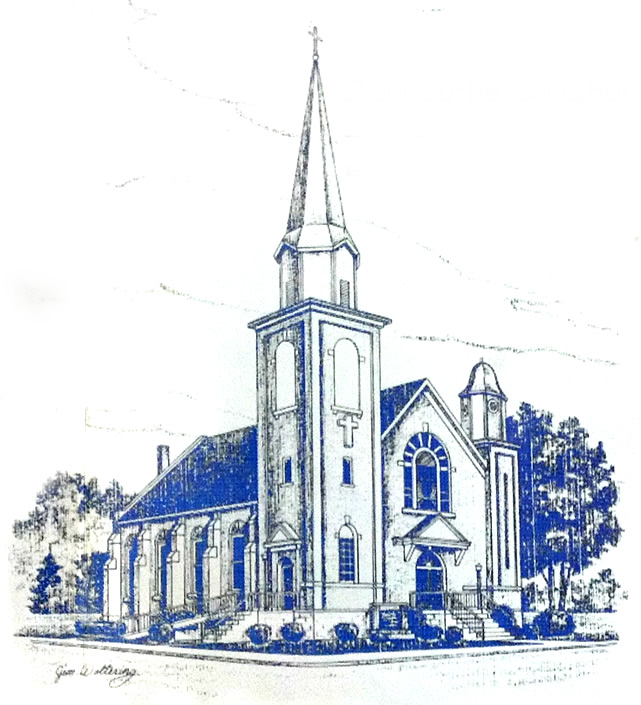
150th Anniversary Print - A Gift from Lutheran Brotherhood International
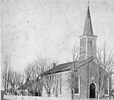

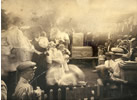


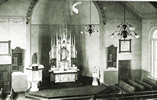

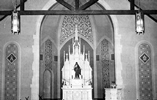
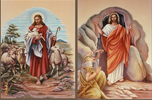
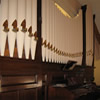

History of Zion Lutheran Church
This is the history of our church congregation and the various houses of worship used by the membership. A story of growth, challenges, and above all, God's love.
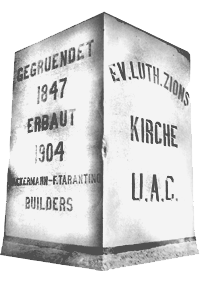 In 1847, itinerant minister Rev. Frederich Lochner began ministering to the German-speaking Lutheran families of Staunton in their homes. By 1850 the newly organized congregation used a frame house that served as both a church and parsonage. January 1851, Rev. John Reizner was installed as the first resident pastor. Members constructed a new frame church in 1854 to house the growing congregation. On March 2, 1856, the congregation joined the Lutheran Synod of Missouri, Ohio, and Other States.
In 1847, itinerant minister Rev. Frederich Lochner began ministering to the German-speaking Lutheran families of Staunton in their homes. By 1850 the newly organized congregation used a frame house that served as both a church and parsonage. January 1851, Rev. John Reizner was installed as the first resident pastor. Members constructed a new frame church in 1854 to house the growing congregation. On March 2, 1856, the congregation joined the Lutheran Synod of Missouri, Ohio, and Other States.
Education became a part of our congregation's history as far back as 1858 when church records reveal Pastor Reincke conducted school classes several times a week in his study. In 1859, school classes began meeting in the church. The local pastor continued to teach until 1865 when C.Haas became the first resident teacher. The first school building was located next to what is now the church on Elm Street. Sometime during the 1870's a second school building was built.
As time passed, the size of the congregation continued to expand. Therefore in 1863, during Pastor R. Vogt's ministry, members built a larger church located on the sight of the present building. During Pastor Gotthold Kuehn's ministry (1890-1904), the congregation realized that once again the house of worship had grown too small. Members decided to build another house of worship.
On August 14, 1904, the cornerstone of our present church was laid. Rev. A. Almstedt of Granite City and Rev. John Andria of Braunschweig Church delivered the cornerstone dedication addresses.
Construction was completed in a little over a year. Builders took time out in 1905 to have their picture taken with their nearly-completed project. Dedication ceremonies took place on March 12, 1905. Rev. M. Daib of Troy, Illinois, delivered a morning address, and Rev. Frederick Brand of Springfield, Illinois, delivered an evening address.
The new church, surrounded by a picket fence sat firmly on a foundation of Grafton rock. The remainder of the building was constructed of pressed brick. Its main steeple towered to a height of 127 feet. Contained within the bell tower were three bells, one from the old church and two new ones. The church had a seating capacity of 400 and cost $20,000.00 to build.
At the time of the dedication, the congregation had 500 communicant members. It supported one pastor and two teachers who instructed 147 children. It also provided homes for the pastor and two teachers.
In 1905 the interior of the new church featured ornate fixtures, lights outlining the chancel, and the pulpit on the south side of the altar, resting on a tall pedestal. The Ladies Aid purchased the church pews, the altar and the pulpit, the statue of Christ, altar covers, and carpeting around the altar. The stained glass window of the Good Shepherd was donated by school children when the church was built.
Organ music has always been an important part of Zion. The original handpumped organ was replaced in 1908 by a more modern instrument. Various repairs and improvements to that organ have been made throughout the ensuing years. In 1948, chimes were installed in memory of World War II service men and women. In 1996, a new hand-crafted console was installed and the organ was again rebuilt.
Construction was completed in a little over a year. Builders took time out in 1905 to have their picture taken with their nearly-completed project. Dedication ceremonies took place on March 12, 1905. Rev. M. Daib of Troy, Illinois, delivered a morning address, and Rev. Frederick Brand of Springfield, Illinois, delivered an evening address.
The new church, surrounded by a picket fence sat firmly on a foundation of Grafton rock. The remainder of the building was constructed of pressed brick. Its main steeple towered to a height of 127 feet. Contained within the bell tower were three bells, one from the old church and two new ones. The church had a seating capacity of 400 and cost $20,000.00 to build.
At the time of the dedication, the congregation had 500 communicant members. It supported one pastor and two teachers who instructed 147 children. It also provided homes for the pastor and two teachers.
In 1905 the interior of the new church featured ornate fixtures, lights outlining the chancel, and the pulpit on the south side of the altar, resting on a tall pedestal. The Ladies Aid purchased the church pews, the altar and the pulpit, the statue of Christ, altar covers, and carpeting around the altar. The stained glass window of the Good Shepherd was donated by school children when the church was built.
Organ music has always been an important part of Zion. The original handpumped organ was replaced in 1908 by a more modern instrument. Various repairs and improvements to that organ have been made throughout the ensuing years. In 1948, chimes were installed in memory of World War II service men and women. In 1996, a new hand-crafted console was installed and the organ was again rebuilt.
Zion Timeline
- 1847 - Friedrich Johann Carl Lochner refers to a Lutheran parish served by himself in the village of Staunton. He was an itinerant pastor meeting in peoples homes.
- 1850 - A frame house purchased to serve as both church and parsonage
- 1851 - Congregation adopts the name "Zion German Evangelical Lutheran Church". Pastor John F. Reisner becomes first resident pastor.
- 1854 - First church building built ....cost $125.00; Zion recorded its first marriage and first confirmation class.
- 1856 - Zion joins the Lutheran Church - Missouri Synod
- 1858 - Lutheran school established - classes met in the church
- 1861 - Congregation's first organization established, a Bible society; Congregation resolved to hold a general wartime prayer for duration of Civil War
- 1863 - Second church building constructed; Second parsonage constructed
- 1865 - First resident teacher - C. Haas; President Lincoln assassinated - congregation holds special day of prayer
- 1866 - School closed - community plagued by fever
- 1872 - New school erected
- 1881 - Second school erected (called the small school)
- 1882 - teacherage large enough for 2 families built on Mill Street
- 1883 - English taught for the first time in the Lutheran School
- 1884 - School choir donates school bell
- 1893 - Scarlet fever and diptheria epidemic causes all schools closed from Palm Sunday until Pentecost
- 1896 - Addition added to back of school on Elm Street
- 1900 - 500 communicant members & 115 men on the voters roster; Ladies Aid Society established
- 1904 - Present church building erected
- 1905 - English services held for first time (once a month on Sunday evenings); Ushers are introduced.
- 1908 - Lydia Circle, Church choir & the Euphonia founded; Contract drafted to purchase new organ in the amount of $2350.00
- 1910 - Present school erected at a cost of $24,079.29, Enrollment of 160 students; Miss Anna DeVries, Zion's first female teacher is hired; School is equipped with an auditorium on the third floor and a duck-pin bowling alley in the basement
- 1919 - Members granted permission to speak English during meetings
- 1921 - Church interior redecorated
- 1923 - Congregation celebrates Diamond Jubilee - services held in both English & German
- 1924 - Resolution forbids boys to play football on school grounds
- 1926 - Present parsonage erected; Ladies Aid pays $200 to have school auditorium stage redecorated; Voted to reserve last row of seats in church for mothers with small children
- 1928 - Zion begins to hold church services for Slovak families in area
- 1929 - Great depression begins. Many church members out of work, contributions to church dwindle. Decreased enrollment & financial burdens force congregation to close one classroom.
- 1933 - Sunday School organized with 217 students
- 1934 - Men's Club is established; Debt Reduction Fund begun
- 1935 - Day school children no longer required to sit in church balcony during worship; 25 year confirmation reunion service held
- 1936 - Ladies Aid granted permission to install a kitchen in school basement.
- 1937 - Ladies Aid contributes $721.58 to have bathrooms installed in school basement. As a show of faith, trustees are instructed to rid the school grounds of the old "outer" buildings; WPA Band given permission to hold performances for school children.
- 1938 - New school desks are purchased and duck-pin bowling alley is removed
- 1939 - Confirmands begin wearing robes
- 1940 - Ladies Aid celebrates 40th anniversary
- 1942 - Pastor Kleinhans passes away, serving Zion congregation for 33 years; Congregation resolves to have church constitution translated into English and Lenten services are conducted only in English, Ladies Aid donates loudspeaker and microphone system to church. Ladies Aid also contributes $659.35 for redecorating school auditorium and stage.
- 1943 - Church redecorated; Loudspeaker and microphone system are removed because it was felt they were "too modern".
- 1944 - First eighth grade graduation service held; Debt Reduction envelopes were eliminated and Building Fund established
- 1946 - School kitchen was modernized. School became a participant in the Hot Lunch Program; Lighted cross on outside of church donated in memory of Carl B. Guenther; Welcome Home Service observed for boys returning home from World War II
- 1947 - Chimes installed on church organ as a memorial to boys who had given their lives in service to their country; Outdoor church bulletin board donated by Ladies Aid
- 1948 - Church organ rededicated after extensive repairs; Piano purchased for church; The third school classroom reopened; Kindergarten operated from March to May
- 1950 - Modern age officially dawned at Zion - church purchased its first power lawnmower; Present church redecorating begun - steel rods, boxed in to look like beams, which spanned the width of the church to prevent the walls from spreading due to weight of roof, radiators were relocated and covered, lighting was updated, The pulpit was removed from its high stand and moved to the north side of church. The interior was then repainted. Outside the church was tuckpointed and repainted. New steps and railings were added and the outside grounds were landscaped. The total cost of the project was $17,000.00. In addition, 700 hours of labor were donated by members.
- 1952 - Kindergarten operation closed
- 1953 - Lutheran Women's Missionary League organized; German worship services discontinued
- 1954 - Altar Guild begun
- 1955 - School kitchen upgraded
- 1957 - School adds fourth classroom; Parent-Teacher League holds first meeting
- 1958 - A portion of school auditorium converted into a classroom and four teachers are employed
- 1960 - First sausage supper held; School has new west entrance installed and lavatory facilities are renovated
- 1962 - Major church remodeling undertaken. Altar statue repainted; Mr. Max Autenrieb painted two murals which flank the chancel; Extensive repairs are made to church steeple
- 1963 - New lectern and baptismal font were dedicated.
- 1964 - New teacherage built on corner of Mill and Elm; Old parsonage on Henry Street is torn down; Slovak church services are discontinued
- 1969 - Teacherage on West Spring street is purchased
- 1972 - Church celebrates 125th anniversary; The walls and part of the ceiling of the church were canvassed to prevent cracking, the interior was completely repainted, paneling was placed in the narthex, and carpeting was laid over the entire nave, narthex, and balcony. The two murals were retouched.
- 1979 - Church greeter program is implemented
- 1980 - Congregation votes to hold Saturday evening worship services in addition to two Sunday morning services; Immanuel, South Staunton closes - many members join Zion; Office space in school is remodeled to make room for a pastor's office
- 1981 - Organ rebuilt and rededicated. Chancel remodeled, adding new communion railing; Eternal flame was donated.
- 1982 - Lutheran Worship introduced, New Constitution adopted; Handbell choir is organized
- 1983 - School addition dedicated. Enlarged facilities includes a gym, classrooms, a concession stand, etc. Computers are donated to school
- 1984 - New Creations LWML organized; Helping Hands organized
- 1986 - Assistant pastor is called; Shipmates organization is formed
- 1987 - Another redecorating project for the church included among other things, painting, lighting, stairway, and guttering improvements as well as the addition of mail slots for each of the congregation's families. Windows in nave doors serve to illustrate the name of Zion. The windows are the work of Herschel Wilson of Worden, meaning to state clearly: "We are the Lord's Zion whom the Lord is leading to Zion."; Autenrieb Art Studios of Edwardsville are engaged to repaint the church interior; Voters accept proposal to build an addition to the west end of the church building, connected by a bridge-type ramp.
- 1988 - As the needs of the church expanded more office space was needed, the Parish Center was built and connected to the church, containing offices, meeting rooms, and a reception area.
- 1993 - First annual dinner auction held
- 1995 - New chalice is donated
- 1996 - Electric altar candles and Advent wreath candles are replaced with oil candles. Students in sixth thru eighth grade participate as Acolytes during worship; Portions of church's exterior are tuckpointed; New exterior doors are donated and installed; In commemoration of 150 years of Zion, original cross from steeple of church is housed in brick display at east entrance; Church organ is rebuilt; School undergoes updating. Bathroom facilities are upgraded and new wiring is installed in older sections to accomodate computers.
- 1998 - All classrooms in school are air-conditioned
- 1999 - School sidewalks are replaced
- 2000 - After school extended care program is implemented
- 2002 - New computer lab is dedicated; Summer day care is organized
See Something Missing or Misplaced? Contact the Church Office and Share Your History!


